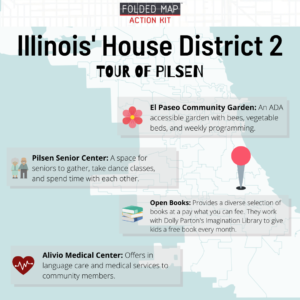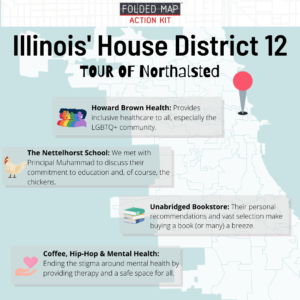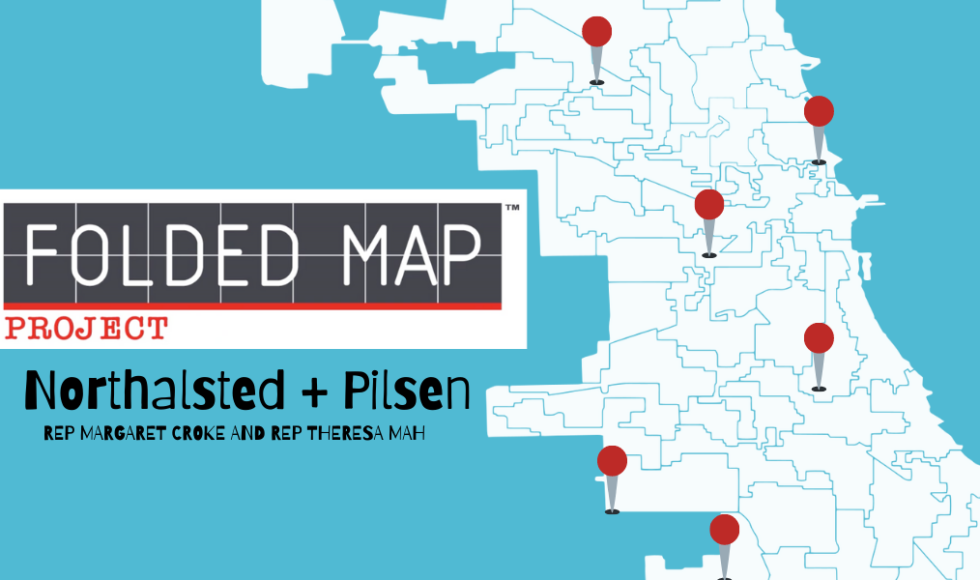When Block Club Chicago originally posted about Tonika Lewis Johnson’s Folded Map Project, I was eager to take part — not just as an individual, but as a representative of the 12th district.
This revolutionary project connects residents at corresponding addresses on opposite sides of Chicago aka “neighborhood twins”— meaning, for our district office on the 1300 block of N Halsted, our neighborhood twin is the 1300 block of S Halsted.
Most Chicagoans tend to stay within their own neighborhoods, rarely venturing out of their communities to meet new people from all parts of our diverse city. Lewis Johnson argues that through exploring other neighborhoods and reflecting on your own, it’s hard to miss the impact that urban segregation and policies like redlining have had on the city. In addition to shining a light on how these policies have affected our city, the project also seeks to highlight what makes each of our districts unique and special.
Earlier this month, my ‘‘neighborhood twin” Representative Theresa Mah participated in the project with my office in an effort to close the divide between our separate sections of the city.
Representative M

I was struck not only by El Paseo Community Garden’s natural beauty but was also taken aback by the beauty of the huge mural around the garden. The community worked together on coming up with the concept for the mural, which encompasses immigration, Pilsen history, local art, environmental justice, and workers’ rights.
I then took Representative Mah to my district, which is made up of the Gold Coast, Old Town, Lincoln Park, Lakeview, North Halsted, Buena Park, and Uptown. It is known to be a welcoming place for LGBTQ+ people, young professionals, and families, as well as a home to the Japanese and Jewish communities in Chicago.
Much like the 2nd district, our district has a history of being a safe haven of its own. The LGBTQ+ community has found solace in the North Halsted neighborhood since the 1960s, and today, Howard Brown Health, Center on Halsted, and other organizations are dedicated to maintaining a feeling of inclusion and support in the area. W

Touring each other’s districts helped us better understand a different part of our city and what unites us, the ultimate goal of the Folded Map Project. Both the 2nd and 12th districts are rooted in a history of welcoming marginalized groups, something that I’d like to think is at the core of our city and our state’s beliefs.
Together, through connection and reflection, we can recognize this history and use it to shape the type of change we want to see in our city, state, country, and world.
I encourage everyone to take part in the Folded Map Project in their own way to learn more about the city we call home. Visit https://www.foldedmapproject.com/ to learn more.


